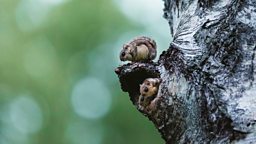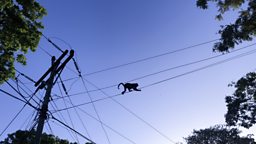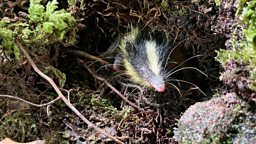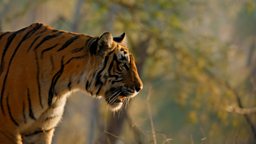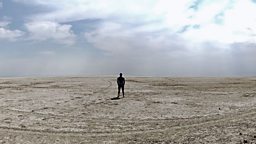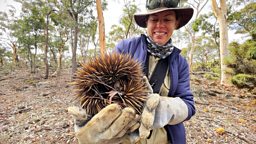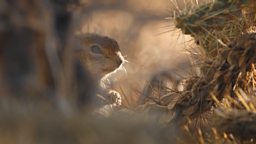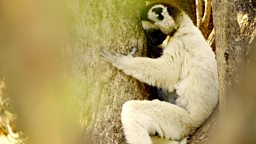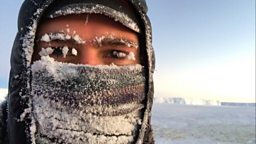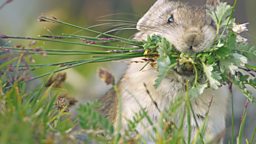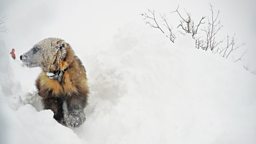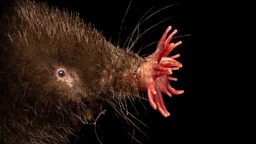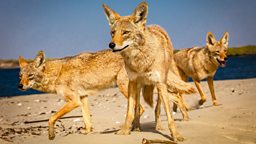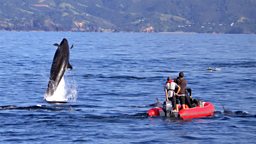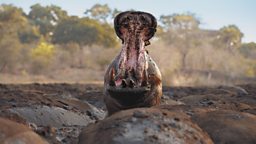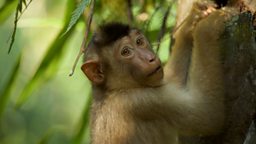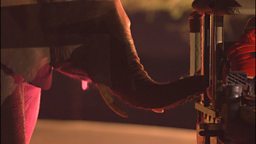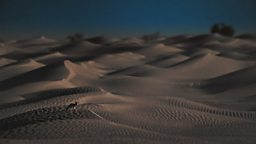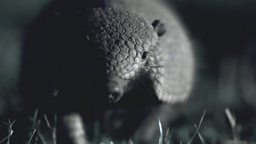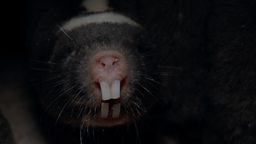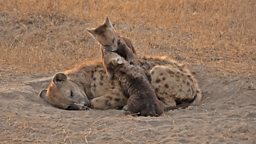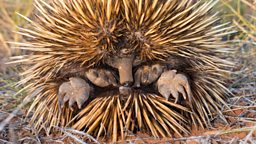The biggest risk in the desert: The Cholla cactus
By Mammals Producer, Rob Pilley
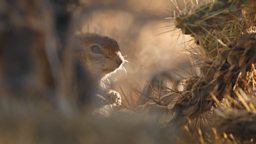
Whilst filming the amazing Harris’ antelope squirrel performing its extraordinary and comical heat dumping behaviour in Arizona’s Sonoran Desert, the crew had to be very aware of other desert animals that could cause them serious harm. This particular desert is laden with infamous deadly critters such as diamondback rattlesnakes, black widow spiders and scorpions, all of which the crew were very aware of whenever sitting and waiting for the squirrels to perform their behaviour.
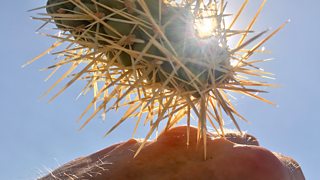
However, the one foe the crew became very aware of in a very short space of time was a little more unexpected. The infamous teddy bear or jumping cholla cactus (pronounced Choya). Named teddy bear because their spines look so fine and fur-like, these endearing-looking plants are certainly not for cuddling!
Each of their very long, sharp spines conceals an additional twist. Viewed under the microscope their surface is covered with tiny barbs, so even if you just lightly touch one without necessarily getting the end of the spine in you, they will stick to you! Hence the name jumping cholla - even without realising they will become attached to you, as if they have jumped on you. It’s a really useful survival tool for the cholla. The cactus consists of small segments, known as pads or pups, and each of these pads, if dislodged or snagged on an animal's fur, will then fall to the ground and start growing into another cactus.
As the desert days went on, enduring baking heat up to the mid 40’s in our search for the elusive squirrel, the jumping cholla made its presence known to all crew on a regular basis! What became very obvious was that the cactus pads were everywhere, and I do mean everywhere!
Most of our filming work for the squirrel sequence took place low on the ground. The squirrels are only tiny, and very terrestrial, so this meant the crew had to plant themselves in a suitable spot each day and not move to avoid disturbing their tiny subjects. But the only secluded shady spots in the desert are often right next to a cholla cactus, so contact is inevitable! But even worse was the array of dislodged pads on or in the ground already, often unnoticed until your hand or bottom makes contact!
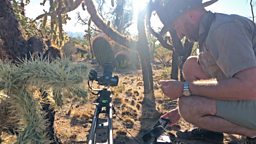
We had a daily chorus of muffled grimaces, moans and ouches as each of the crew subtly moved a tiny amount with their rump or a steadying hand, only to discover another unseen cactus foe! You literally couldn’t move for fear of finding this botanical dynamite! And the pain, it was remarkable! So much so that we spoke to scientists about the cholla spines and why they hurt so much, giving the impression they must be tipped with some form of poison. But no, there is no poison - it’s even more remarkable! As each spine tip is covered in a multitude of barbs, these increase its surface area for maximum adhesion. But this also increases the number of nerves they touch when they go into your skin, and so generates a disproportionally large amount pain in only tiny area!
This we experienced everyday; spines in bottoms, arms, elbows and heads
This we experienced everyday; spines in bottoms, arms, elbows and heads- one of which was found still thoroughly stuck in a crew members head weeks later!!
So, if you go down to the desert today, be sure of a big surprise, be careful not to end up in the middle of a teddy bear chollas picnic!
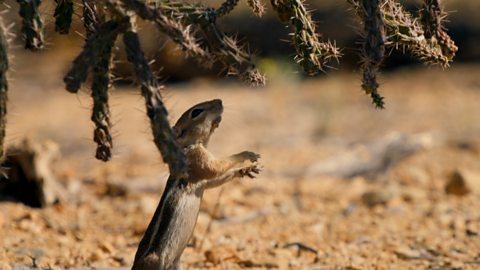
The prickly business of climbing for fruit
Harris's antelope squirrel clambers over painful cholla cactus spines to get its fruit.

